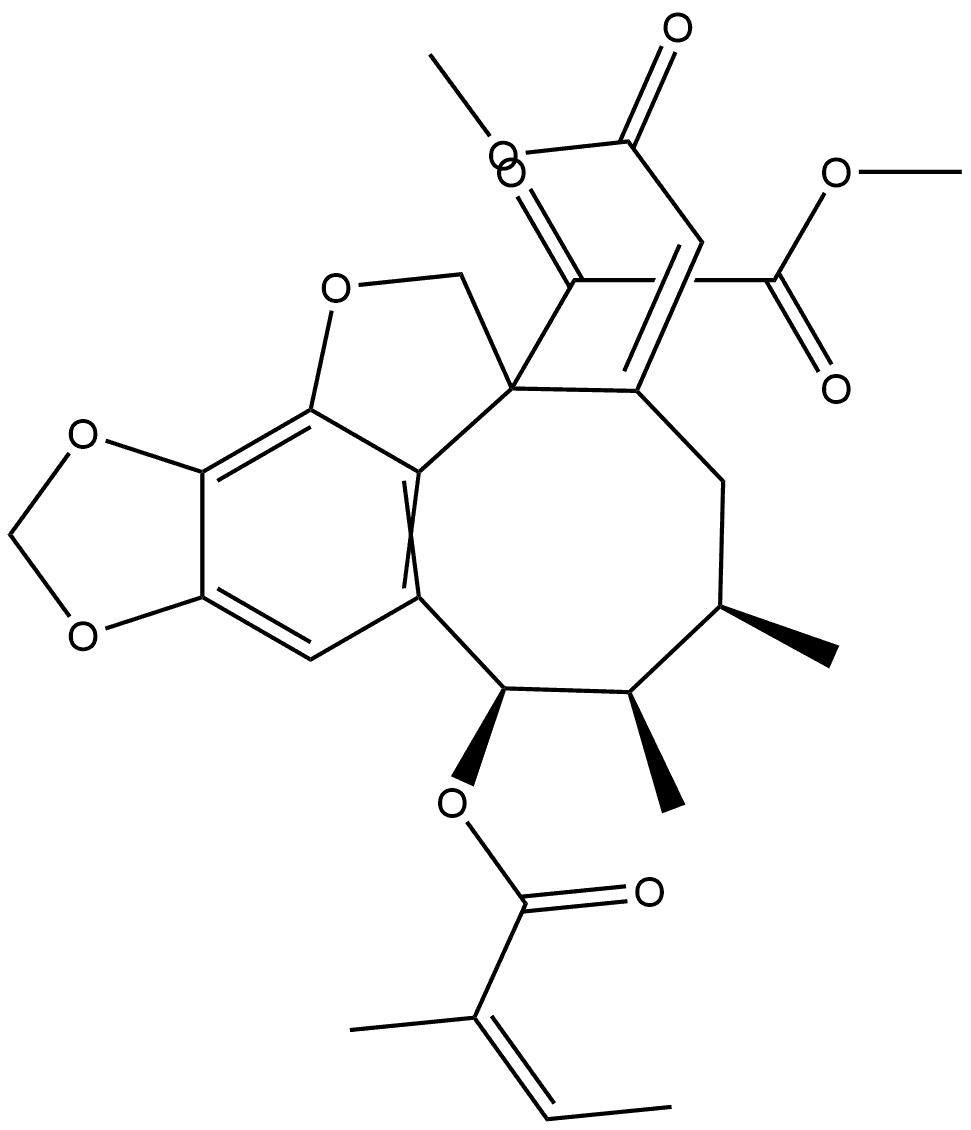Heteroclitin FCAS# 144049-67-2 |

Quality Control & MSDS
Package In Stock
Number of papers citing our products

| Cas No. | 144049-67-2 | SDF | Download SDF |
| PubChem ID | N/A | Appearance | Powder |
| Formula | C27H30O10 | M.Wt | 514.57 |
| Type of Compound | Lignanoids | Storage | Desiccate at -20°C |
| Solubility | Soluble in Chloroform,Dichloromethane,Ethyl Acetate,DMSO,Acetone,etc. | ||
| General tips | For obtaining a higher solubility , please warm the tube at 37 ℃ and shake it in the ultrasonic bath for a while.Stock solution can be stored below -20℃ for several months. We recommend that you prepare and use the solution on the same day. However, if the test schedule requires, the stock solutions can be prepared in advance, and the stock solution must be sealed and stored below -20℃. In general, the stock solution can be kept for several months. Before use, we recommend that you leave the vial at room temperature for at least an hour before opening it. |
||
| About Packaging | 1. The packaging of the product may be reversed during transportation, cause the high purity compounds to adhere to the neck or cap of the vial.Take the vail out of its packaging and shake gently until the compounds fall to the bottom of the vial. 2. For liquid products, please centrifuge at 500xg to gather the liquid to the bottom of the vial. 3. Try to avoid loss or contamination during the experiment. |
||
| Shipping Condition | Packaging according to customer requirements(5mg, 10mg, 20mg and more). Ship via FedEx, DHL, UPS, EMS or other couriers with RT, or blue ice upon request. | ||

Heteroclitin F Dilution Calculator

Heteroclitin F Molarity Calculator
| 1 mg | 5 mg | 10 mg | 20 mg | 25 mg | |
| 1 mM | 1.9434 mL | 9.7169 mL | 19.4337 mL | 38.8674 mL | 48.5843 mL |
| 5 mM | 0.3887 mL | 1.9434 mL | 3.8867 mL | 7.7735 mL | 9.7169 mL |
| 10 mM | 0.1943 mL | 0.9717 mL | 1.9434 mL | 3.8867 mL | 4.8584 mL |
| 50 mM | 0.0389 mL | 0.1943 mL | 0.3887 mL | 0.7773 mL | 0.9717 mL |
| 100 mM | 0.0194 mL | 0.0972 mL | 0.1943 mL | 0.3887 mL | 0.4858 mL |
| * Note: If you are in the process of experiment, it's necessary to make the dilution ratios of the samples. The dilution data above is only for reference. Normally, it's can get a better solubility within lower of Concentrations. | |||||

Calcutta University

University of Minnesota

University of Maryland School of Medicine

University of Illinois at Chicago

The Ohio State University

University of Zurich

Harvard University

Colorado State University

Auburn University

Yale University

Worcester Polytechnic Institute

Washington State University

Stanford University

University of Leipzig

Universidade da Beira Interior

The Institute of Cancer Research

Heidelberg University

University of Amsterdam

University of Auckland

TsingHua University

The University of Michigan

Miami University

DRURY University

Jilin University

Fudan University

Wuhan University

Sun Yat-sen University

Universite de Paris

Deemed University

Auckland University

The University of Tokyo

Korea University
- Benzoyloxokadsuranol
Catalog No.:BCX2013
CAS No.:130252-47-0
- Ananonin A
Catalog No.:BCX2012
CAS No.:1314021-67-4
- 5,8-Dihydroxy-6,7,3′,4′-tetramethoxyflavone
Catalog No.:BCX2011
CAS No.:683278-67-3
- 2,5-Dihydroxy-7-methoxyflavanone
Catalog No.:BCX2010
CAS No.:35486-66-9
- 17β-Tenacigenin B
Catalog No.:BCX2009
CAS No.:863767-79-7
- (-)-Torreyol
Catalog No.:BCX2008
CAS No.:19435-97-3
- (-)-cis-Calamenene
Catalog No.:BCX2007
CAS No.:483-77-2
- Schiarisanrin D
Catalog No.:BCX2006
CAS No.:188943-88-6
- Paeonicluside
Catalog No.:BCX2005
CAS No.:448231-30-9
- T-Cadinol
Catalog No.:BCX2004
CAS No.:5937-11-1
- T-Muurolol
Catalog No.:BCX2003
CAS No.:19912-62-0
- Digitalin
Catalog No.:BCX2002
CAS No.:752-61-4
- Tenuifoliose B
Catalog No.:BCX2016
CAS No.:139682-02-3
- Tenuifoliose J
Catalog No.:BCX2017
CAS No.:147742-14-1
- Tenuifoliose K
Catalog No.:BCX2018
CAS No.:147742-16-3
- α-Cadinol
Catalog No.:BCX2019
CAS No.:481-34-5
- Tenuifoliose C
Catalog No.:BCX2020
CAS No.:139682-03-4
- Binankadsurin A
Catalog No.:BCX2021
CAS No.:77165-79-8
- Ananonin B
Catalog No.:BCX2022
CAS No.:1314021-69-6
- Catechin 7,3'-di-O-beta-D-glucopyranoside
Catalog No.:BCX2023
CAS No.:105330-53-8
- Lansiumamide B
Catalog No.:BCX2024
CAS No.:121817-37-6
- 5-(alpha-D-galactopyranosyl-(1→6)-alpha-D-galactopyranosyloxymethyl)-2-furancarboxaldehyde
Catalog No.:BCX2025
CAS No.:1454574-91-4
- 5-(alpha-D-galactopyranosyloxymethyl)-2-furancarboxaldehyde
Catalog No.:BCX2026
CAS No.:890652-72-9
- Lansiumamide C
Catalog No.:BCX2027
CAS No.:121817-38-7
Antihepatitis activity (anti-HBsAg and anti-HBeAg) of C19 homolignans and six novel C18 dibenzocyclooctadiene lignans from Kadsura japonica.[Pubmed:16041651]
Planta Med. 2005 Jul;71(7):646-53.
Bioassay-directed fractionation of the EtOAc extract of Kadsura japonica has led to the isolation of six new C18 dibenzocyclooctadiene lignans, schizanrins I, J, K, L, M, N, along with four known C19 homolignans, taiwanschirins A, B, C, and Heteroclitin F. The elucidations of the new structures were based on spectral analysis. Bioassay evaluation against human type B hepatitis revealed that taiwanschirins A and B showed strong activity for anti-HBsAg and a medium effect for anti-HBeAg at 25 microg/mL (12.9 and 11.9 microM for taiwanschirins A and B, respectively).
Interiotherins C and D, two new lignans from Kadsura interior and antitumor-promoting effects of related neolignans on Epstein-Barr virus activation.[Pubmed:12350139]
J Nat Prod. 2002 Sep;65(9):1242-5.
Two new lignans, interiotherins C (1) and D (2), together with the known compounds interiorin (3), Heteroclitin F (4), neokadsuranin (5), heteroclitin D (6), kadsurin (7), gomisin A (8), schisandrin C (9), interiotherin A (10), angeloylgomisin R (11), gomisin G (12), interiotherin B (13), and gomisin C (14), were isolated from the stems of Kadsura interior. The structures and stereochemistries of the new compounds were determined from mass, CD, and NMR spectral data. Fourteen neolignans were screened as potential antitumor promoters by examining their ability to inhibit Epstein-Barr virus early antigen (EBV-EA) activation (induced by 12-O-tetradecanoylphorbol-13-acetate) in Raji cells. Neokadsuranin (5) and schisandrin C (9) were the most potent compounds. These data suggest that some neolignans might be valuable antitumor promoters or chemopreventors.


